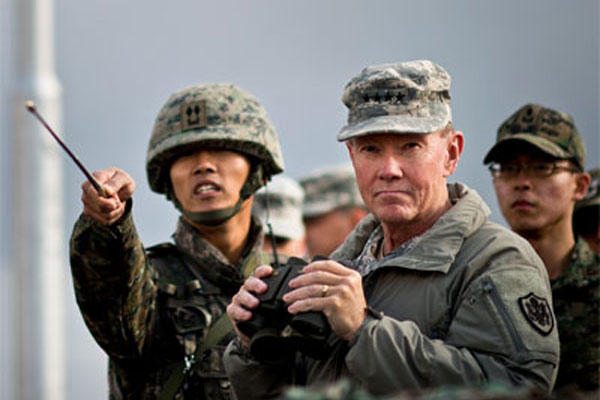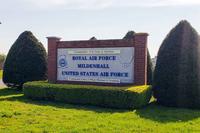The U.S. Army and the Marine Corps could fight a war with North Korea, but not without exhausting their combined ground forces leaving nothing in reserve, senior Army and Marine officials told Congress Wednesday.
With the threat of more sequestration cuts in 2016, service leaders have been warning Congress that the U.S. military -- particularly the Army -- will become too small to handle a combined fight like Iraq and Afghanistan in the future.
The Pentagon's fiscal 2015 defense budget will reduce the active force from 490,000 to a force size of 440,000 to 450,000 by 2019.
But sequestration cuts scheduled to occur in 2016 will likely force the Army to reduce the active end strength to 420,000.
Lawmakers pressed senior leaders to elaborate on the risks of those cuts at a Wednesday hearing before the Senate Armed Services Committee’s Readiness and Management Support subcommittee.
"Let's say that unfortunately we have to respond to aggression by North Korea -- where none of us wants to end up in a land war -- but let's say we had to go into a land war. What are we able to do?" Sen. Kelly Ayotte, R-N.H., asked.
"In other words … with the 450,000, what are we able to do? With the 420,000 -- with sequestration -- what are we able to do?
"We used to have a theory that we could fight two conflicts, and then we went down to one and a half conflicts. Where does our posture leave us in terms of ground forces and where does our posture leave us if we go forward with sequestration?" she asked.
In the "worst-case" scenario of sequestration, the Army would not be able to repeat its performance over the last decade in Iraq and Afghanistan, Army Vice Chief of Staff Gen. John Campbell told Ayotte.
"We couldn't do that at 420,000," he said. "At 490,000, we feel comfortable we can complete the defense strategic guidance with a little bit of risk. At 450,000 that risk goes much higher. Below 450.000, we don't think we would be able to do it."
The Army's active force reached 570,000 at the height of war in Iraq. During that growth, it took "two to three years to grow [brigade combat teams] from scratch," Campbell said.
"People talk about how it's easy … it's not that easy," he said. "Remember we had brigades where we had to drop down to two maneuver battalions to get the right number of brigades over in Iraq when we had the surge. Now we have BCTs being restructured. We know we need to fight with three maneuver battalions and a reconnaissance piece, and we are trying to reorganize those brigades back and make them more capable. Going to 420,000, we would not be able to do that."
Assistant Commandant of the Marine Corps Gen. John Paxton Jr., told lawmakers that sequestration cuts in 2016 would force the Corps to shrink to 175,000.
"At 175,000, we have, for example, 21 infantry battalions," Paxton said. "If the balloon goes up … we are all in, everybody goes."
In Iraq, Marines operated on a seven-month rotation cycle; soldiers did 12-month rotations.
Ayotte asked what the rotations would like in a future major conflict.
The 175,000-Marine force would be a one-to-two dwell time ratio, Paxton said.
Campbell wasn’t as optimistic. An active force of 420,000 does not allow for rotating units back for reset, he said.
"We would not rotate forces," Campbell said. "I just think that is a flawed assumption."
Ayotte asked "What does that mean if you don't rotate forces?
Campbell said "It means they go over, and they stay."
Service officials maintain that there are other real challenges ahead even without a major ground conflict.
"Even if a major theater war or a major contingency operation doesn’t happen just to sustain aircraft readiness, ship readiness and people training -- we are going to be pressed to sustain that in the long haul," Paxton said.
-- Matthew Cox can be reached at Matthew.Cox@monster.com.


























